Fisher Model & Pattern | A-1E Skyraider Conversion
Reviewed by LSP_Paul
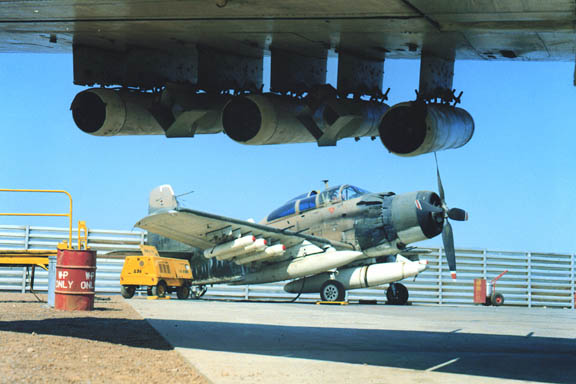
In the early 1960s, the United States provided the government of South Vietnam with increased military assistance and training to resist communist forces, and the U.S. gave Surplus T-28s, Skyraiders and various lift assets to the South Vietnamese Air Force (VNAF). In 1961, USAF Pilots started training VNAF pilots at Bien Hoa Air Base with Skyraiders in VNAF markings. Eventually, the USAF instructors started flying the combat missions with the VNAF pilots over South Vietnam. Typically the USAF Pilot would be flying the actual mission and his VNAF counterpart in the right seat to satisfy the political requirements imposed at that stage of the conflict. Eventually Skyraider training was moved to Hurlburt Field in Florida.
The Skyraider soon got the nickname "Spad" - referring to the French fighter used in World War I, as a sort of teasing by pilots flying newer aircraft entering the theater flying jets.
The first U.S. Air Force Skyraiders in the theater were two-seat A-1Es. They also flew out of Bien Hoa Air Base in May 1964. The 1st Air Commando Squadron (later the 1st Special Operations Squadron), which operated under the call sign Hobo were the first operators. Other USAF squadrons flew Skyraiders from bases in South Vietnam and Thailand under the call signs Spad, Firefly and Zorro. Wherever they went, the Skyraiders provided critical close air support to ground forces and other operations, such as defoliant spraying or supporting the insertion and extraction of special operations teams inside enemy held territory along the Ho Chi Minh Trail.
Air Force Skyraiders during the conflict are probably best remembered for their support of search and air rescue missions (SAR). SAR Skyraiders went by call sign Sandy.
The Skyraiders ability to fly the whole mission including escort, infiltration, and any air to ground prep of known or possible enemy in the area. Once the downed pilot was recovered or sadly if the mission had to be called off, the Skyraiders covered the rescue forces exfiltration of enemy airspace flying alongside the rescue helicopters. The A-1's unmatched massive firepower and loiter time made it the perfect tool for the job. No jet was ever able to do the job as effectively.
Speaking of Coming to the Rescue
Fisher Model & Pattern has a habit of granting the wishes and desires of a lot of different kind of modelers. race cars, race planes, complete kits and conversions like I am reviewing are a godsend for folks who want to build dimensionally and historically accurate models of subjects we modelers are not likely to see from the mainstream model manufactures.
This particular conversion kit allows the modeler to use either the Trumpeter or Zoukei-Mura Skyraiders to lend their parts to creating the "family wagon" version of the Skyraider, the A-1E.
Let's take a look!
What's in the Box?
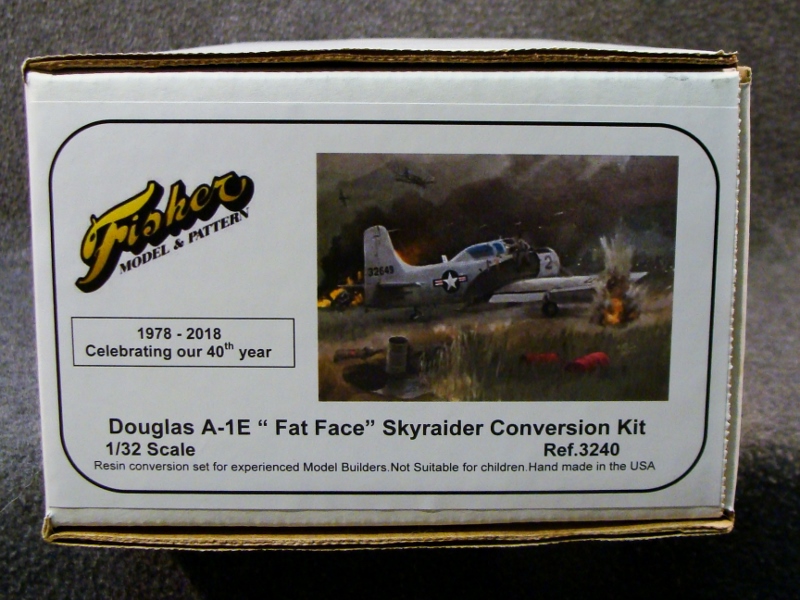
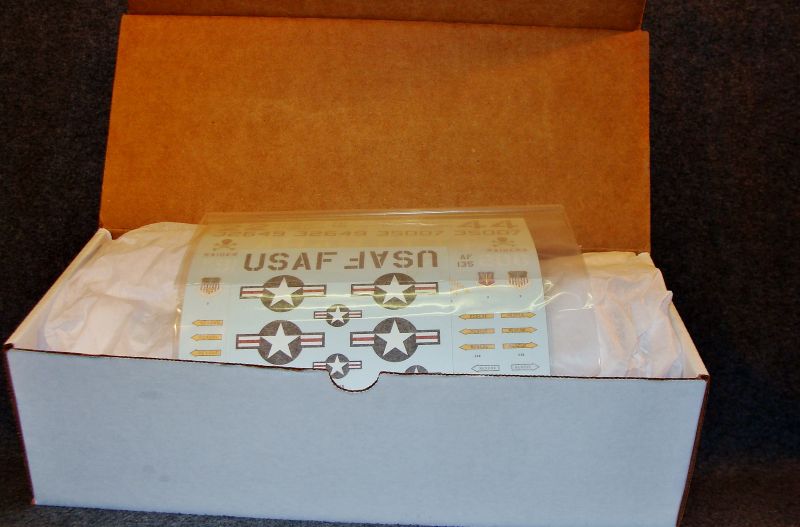
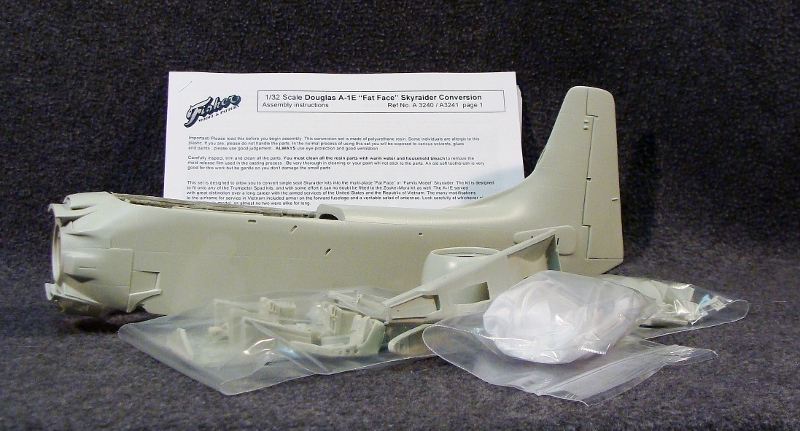
Packed in a sturdy cardboard box, the contents of the conversion come individually bagged (for the smaller parts and clear parts) and everything is safely packed in packing paper to do the very best job of preventing breakage during transit. The review set arrived perfectly intact. Except for the clear resin parts, the rest of the parts are in a cream-colored resin. The clear parts are very clear with no air bubbles to be seen.
The conversion set includes both Yankee ejection system seats as well as the Douglas seats, the details on these as well as the rest of the interior parts is exceptional, with very petite detailing.
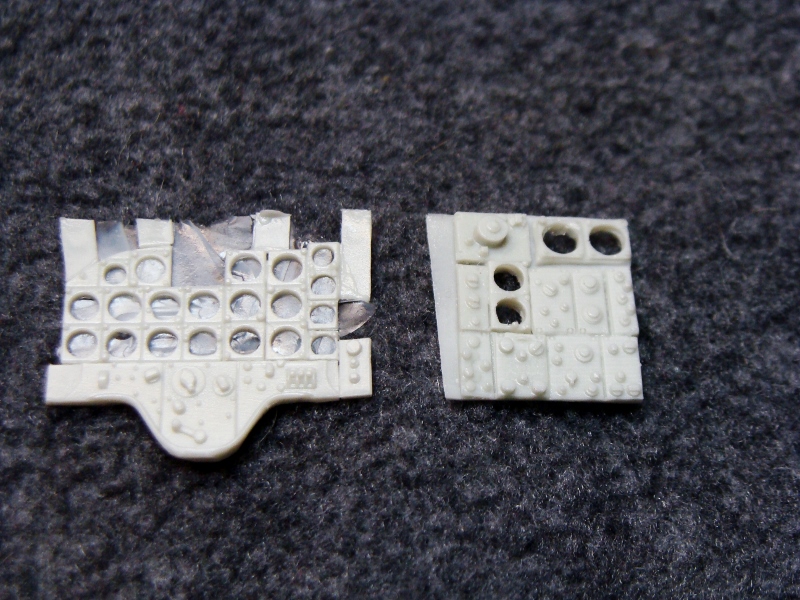
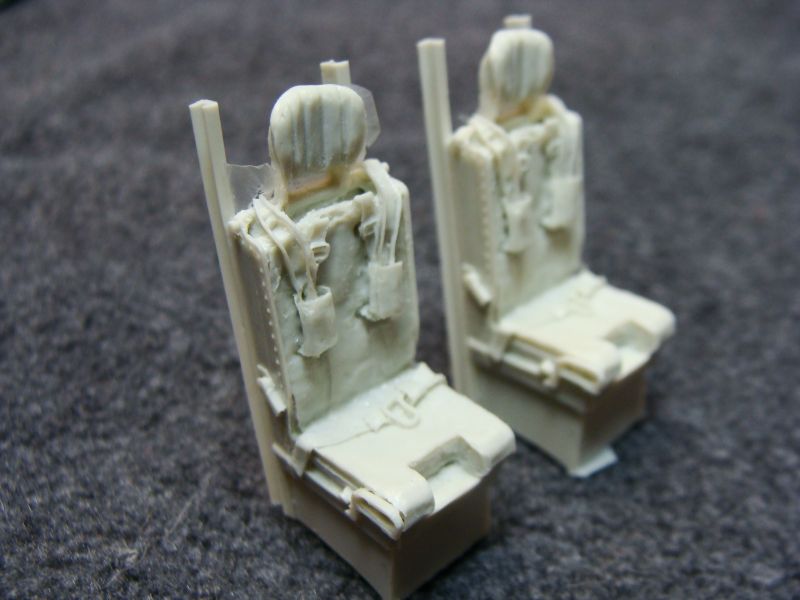
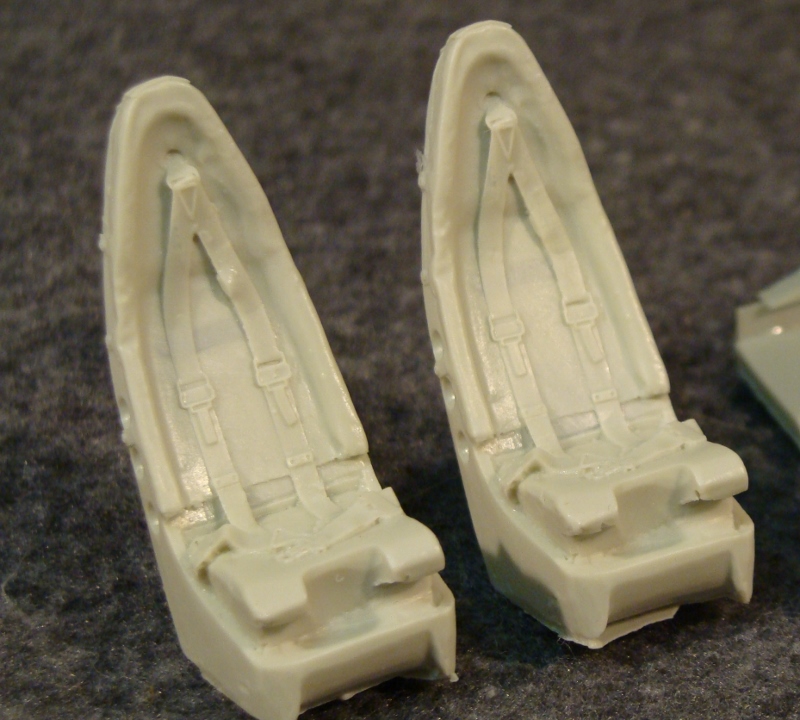
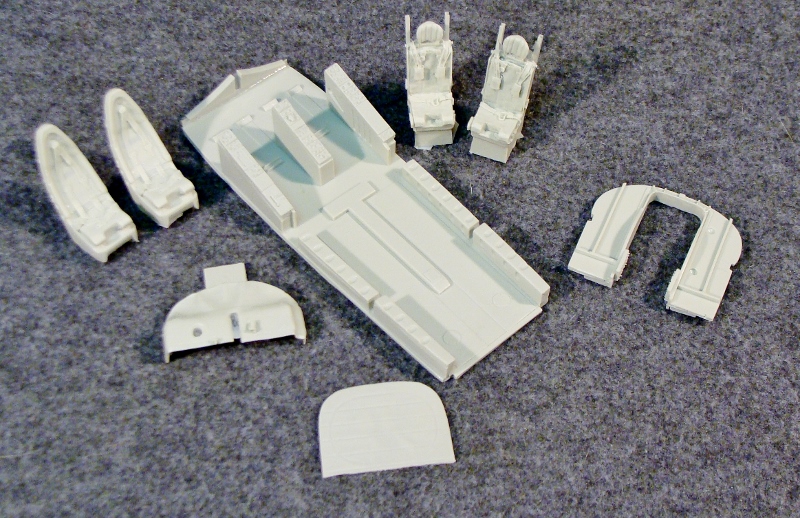

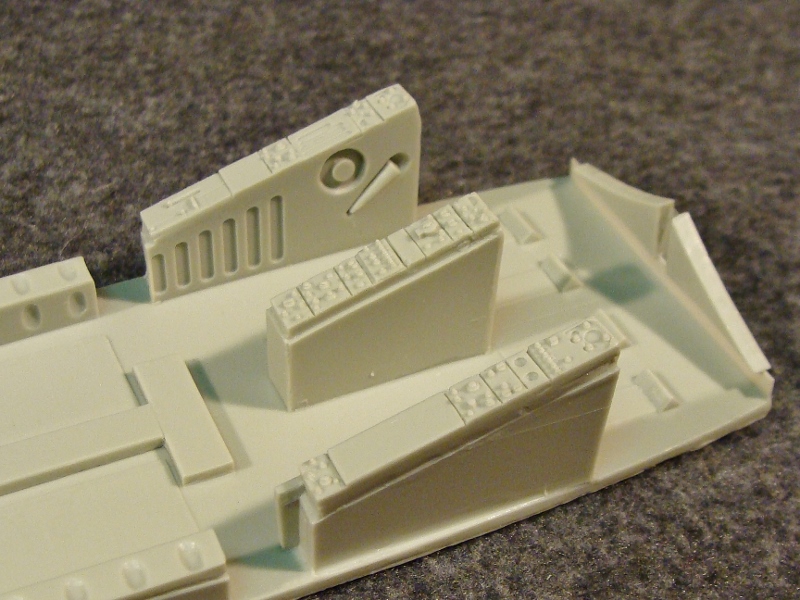

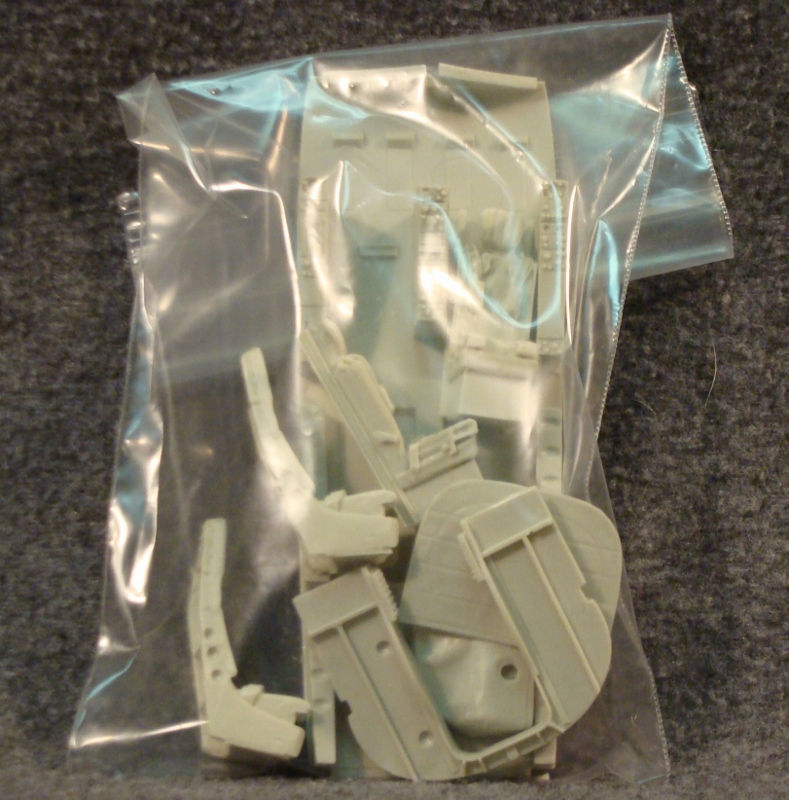
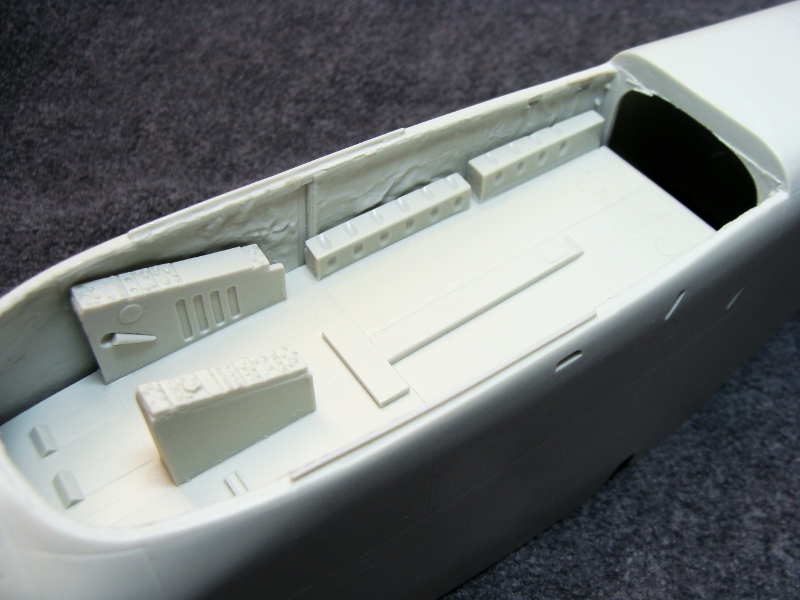
A new cowling is also provided.
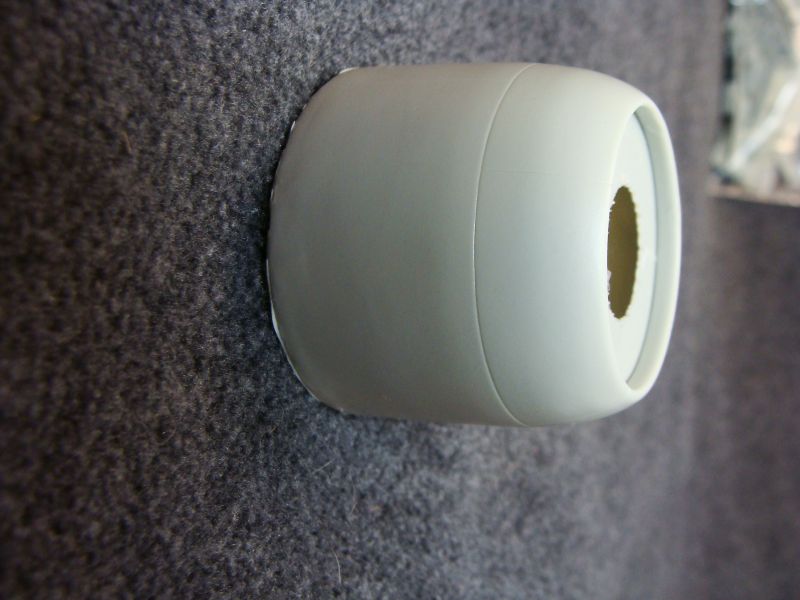
The parts will require cleaning, the casting blocks and flash are minimal. Cleaning and prep of the parts is required as with all resin aftermarket sets, and the suggestions of the manufacturer should be followed to have the best success when painting and assembling. Make sure to get the mold release off of the parts prior to priming or paint.
The Instructions
The instructions are clearly laid out on well printed two sided instruction sheets, they appear to be in a very logical assembly order with call-outs noting where extra care should be used when lining up the parts prior to gluing.
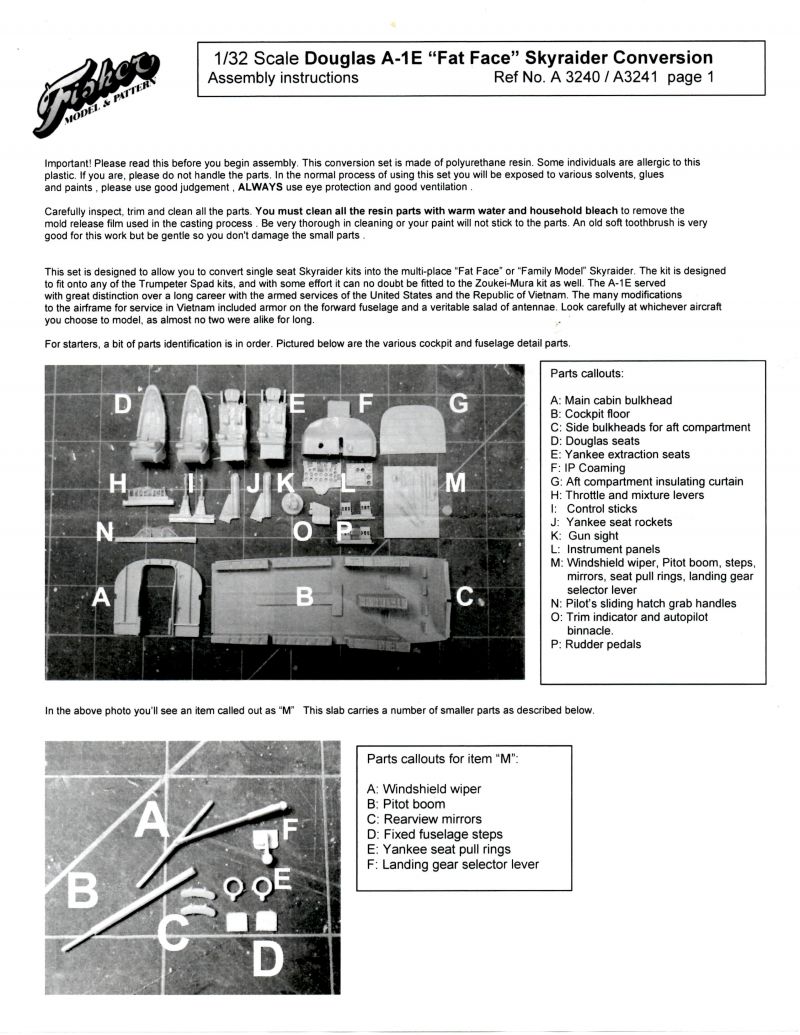
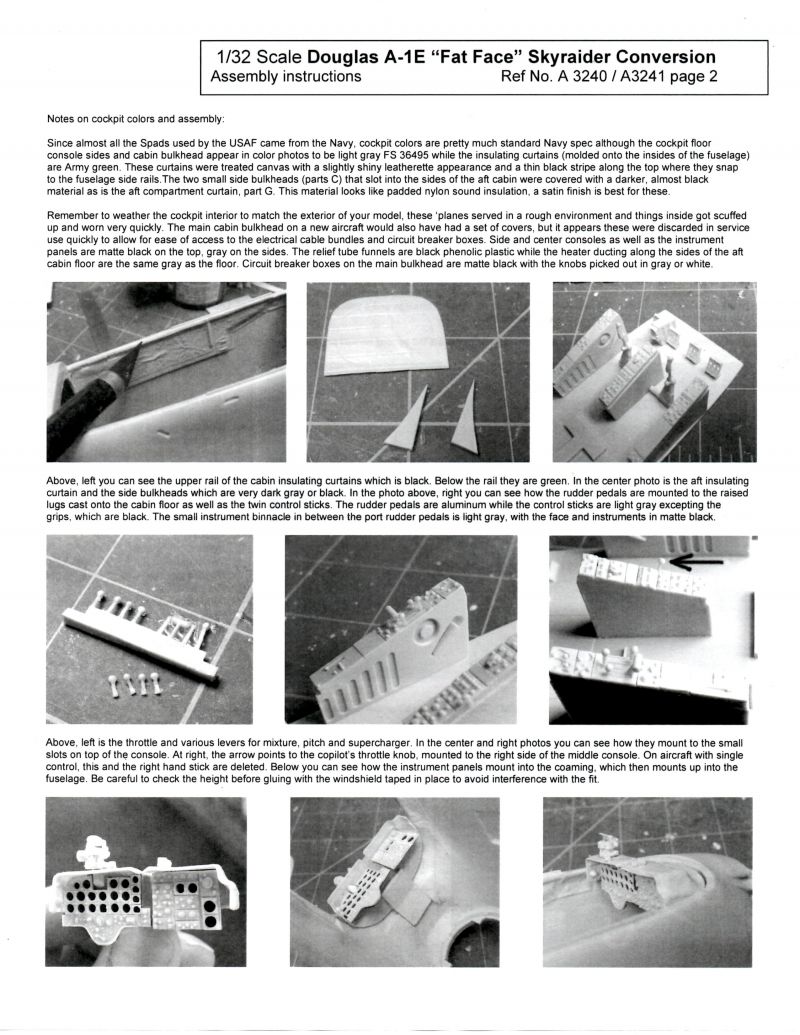

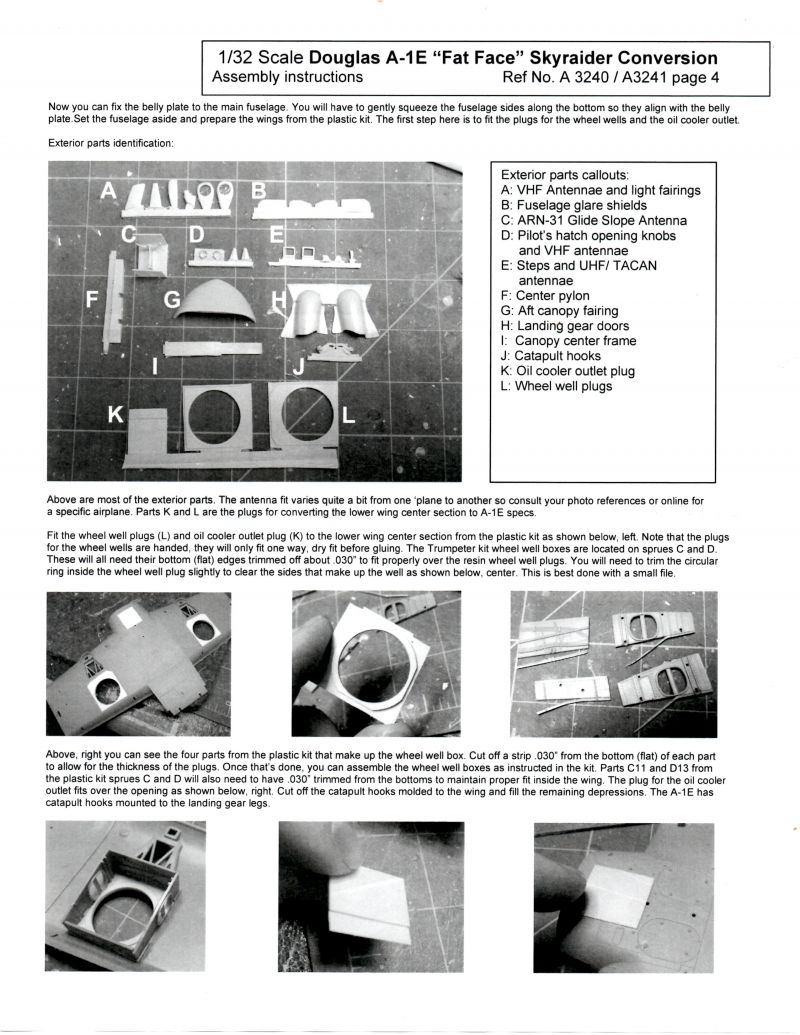
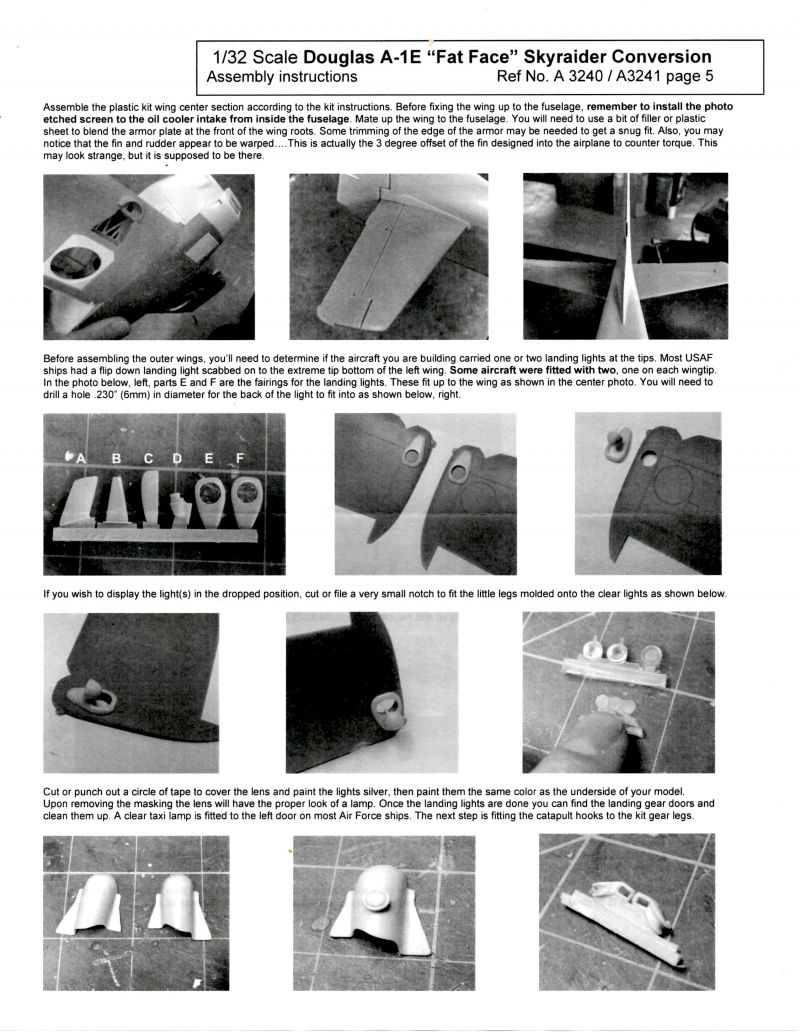
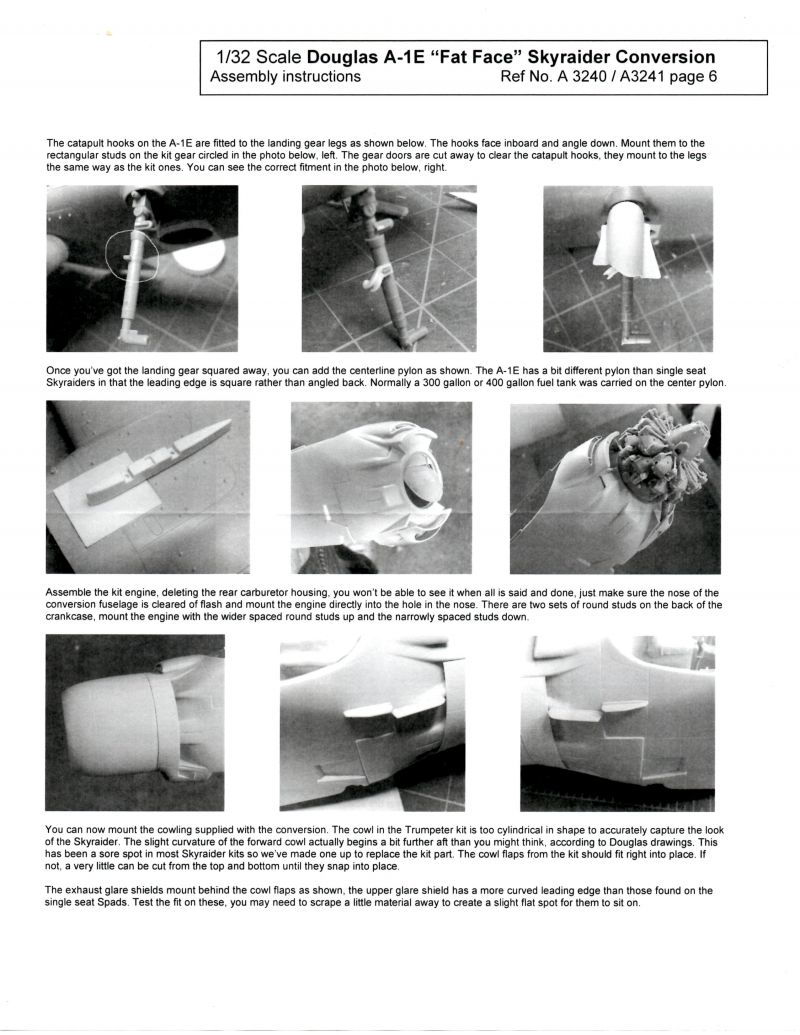

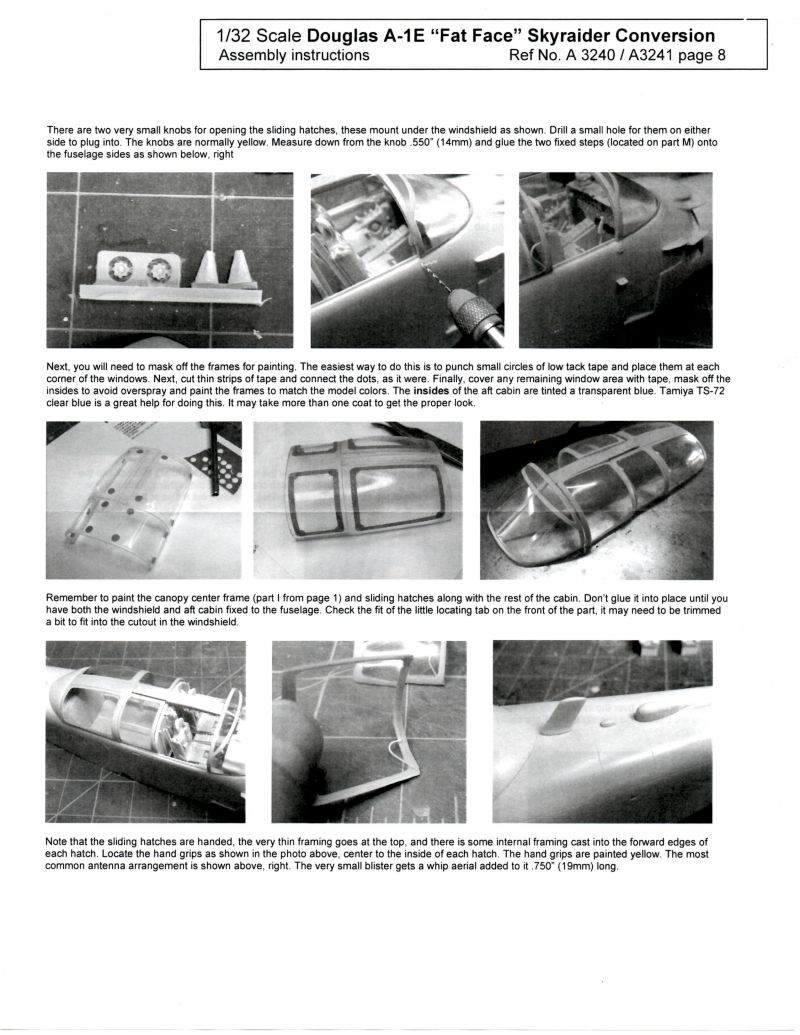
These instructions are very well done, and should take any guesswork out of the process. Specific details including what needs to be modified or installed from the donor kit are very clearly called out. It should also be noted that this set was designed to be used with the Trumpeter kits optimally, but the Zoukei-Mura Skyraider parts can probably be used with slight modification as well.
The Decals and Printed Material
The decals are printed by Cartograf on very nice medium weight decal paper and have a gloss surface and are printed in perfect register and very well detailed. The placement instructions were not included with my copy, so I went to the Fisher website and downloaded mine. Markings cover 4 aircraft, two in overall gray and two in SEA camouflage.
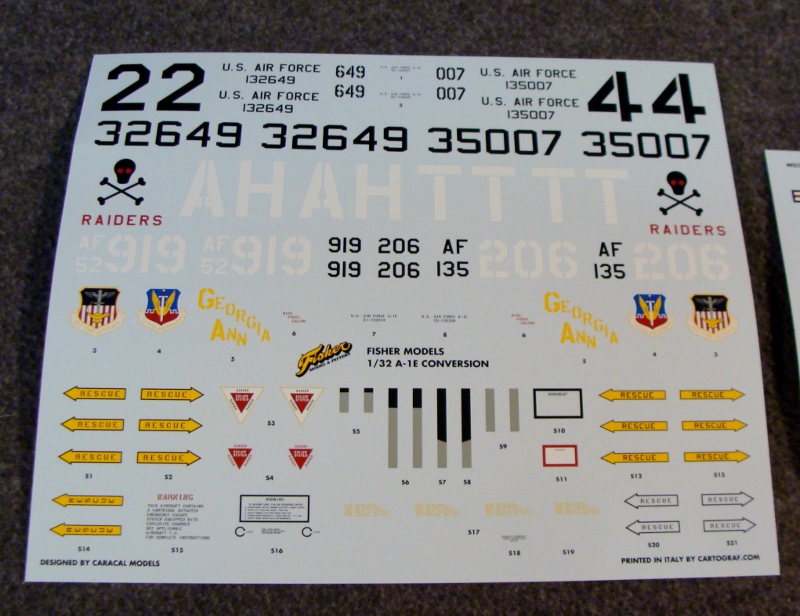
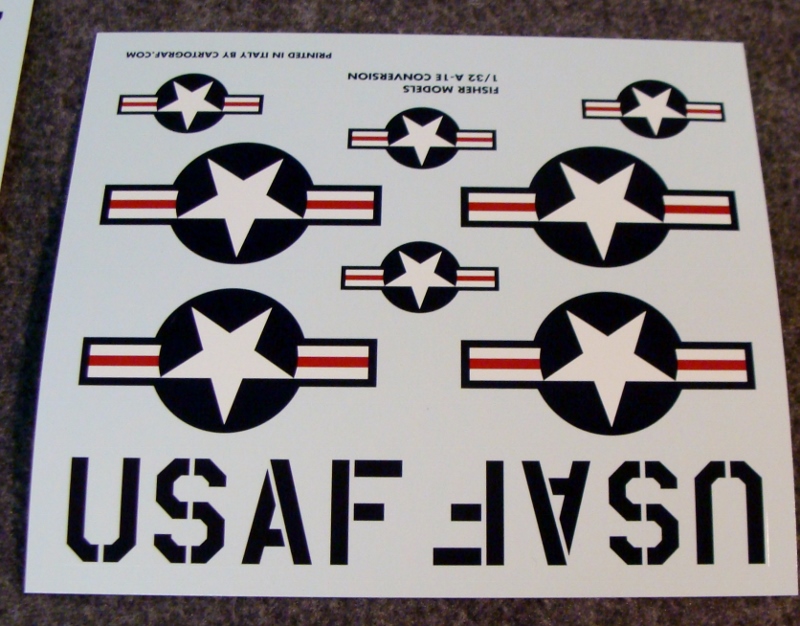
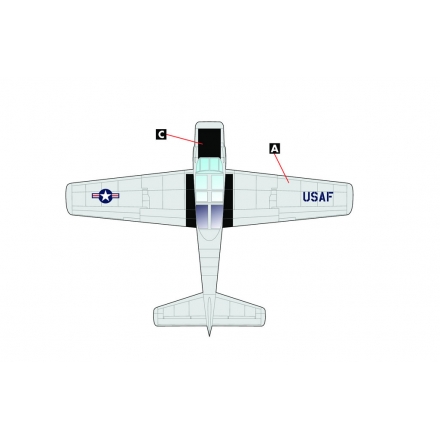
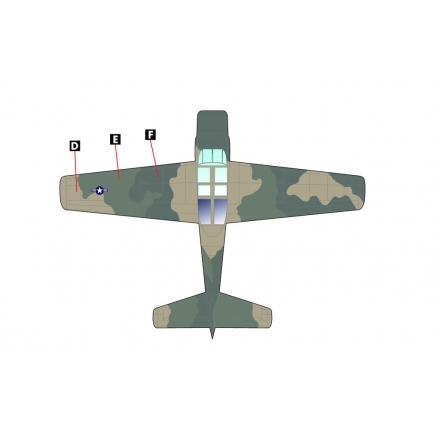

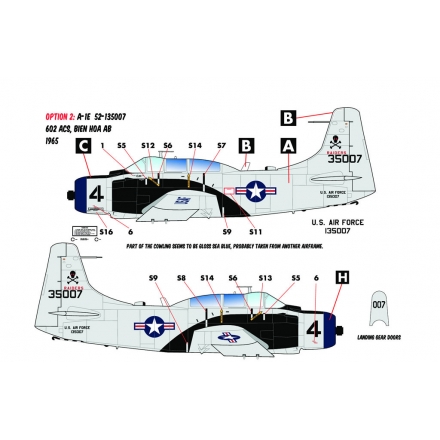
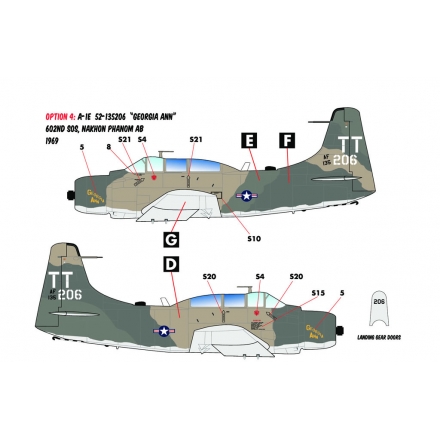
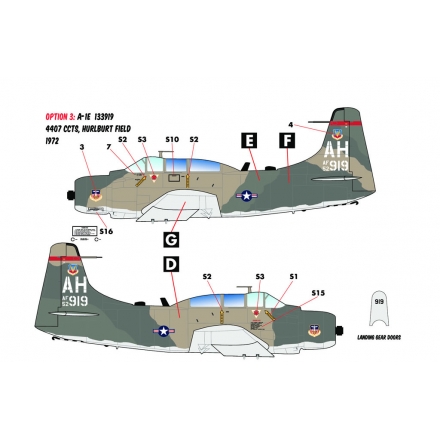
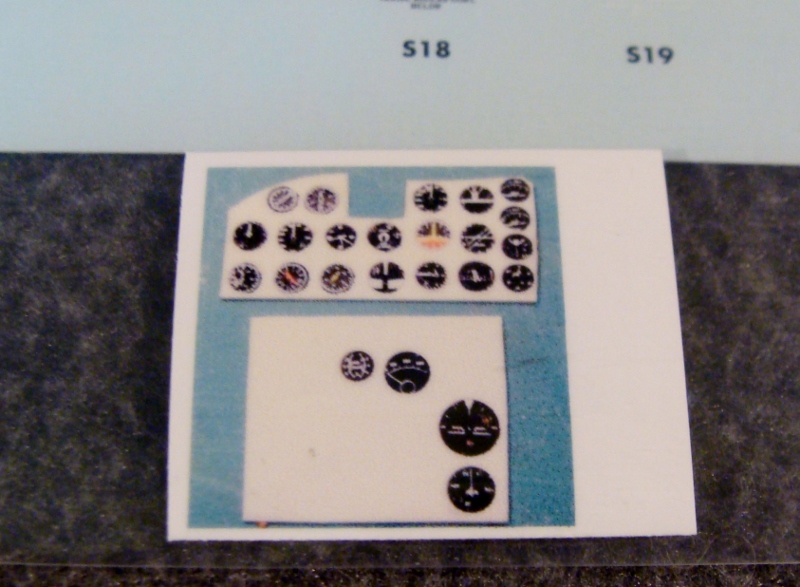
Conclusion
This excellent conversion is about as comprehensive as you're going to find from any resin manufacturer. I do believe it's going to be a huge seller from Fisher Model & Pattern based on the response from LSP members. The subject matter is already intriguing and the level of overall detail and especially the little things included will help anybody wanting to make the multi-seat Skyraider a pretty easy to achieve reality.
Thank you to Fisher Model and Pattern for the review sample, and I can't wait to go get a Trumpeter Skyraider to use this on!
For more information about the Douglas Skyraider I would highly encourage a visit to Skyraider.org.
© LSP_Paul 2018
This review was published on Friday, January 26 2018; Last modified on Monday, January 29 2018
